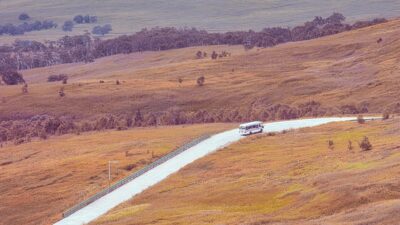Agriculture has long been the backbone of civilization, feeding billions and supporting economies across the globe. However, as the world faces challenges such as climate change, a growing population, and dwindling natural resources, the need for innovative solutions becomes increasingly urgent. Enter agritech, a field that’s not only modernizing farming practices but also revolutionizing how we think about food production, sustainability, and land management.
The Rise of Agritech
Agritech, or agricultural technology, encompasses the combination of technology and agriculture to improve efficiency, productivity, and sustainability. This sector has seen rapid advancements in recent years, fueled by the confluence of better data analytics, artificial intelligence, machine learning, and biotechnology. These technologies have enabled farmers to optimize their operations, reduce waste, and make informed decisions that lead to higher crop yields and better resource management.
1. Precision Agriculture: Farming with Data
One of the cornerstones of agritech is precision agriculture. By leveraging data analytics, farmers can monitor their crops’ health in real time. Using drones, satellite imagery, and IoT devices, farmers can gather data on soil conditions, moisture levels, and crop health. This allows for targeted interventions — such as specific irrigation or fertilization — leading to reduced input costs and increased yields. For instance, companies like CropX and Trimble are providing farmers with smart irrigation systems and precision planting technologies that enable them to use resources more efficiently.
2. Biotechnology: Creating Resilient Crops
Biotechnology plays a crucial role in agritech by enabling the development of genetically modified organisms (GMOs) that can withstand pests, diseases, and extreme weather conditions. Continued advancements in gene editing technologies, such as CRISPR, are paving the way for crops that can thrive in challenging environments, reduce the need for chemical inputs, and contribute to food security. By creating strains of crops that require less water or are resistant to climate stresses, agritech is enhancing both productivity and sustainability.
3. Automation and Robotics: Redefining Labor in Agriculture
Labor shortages in the agricultural sector are becoming increasingly common, and automation is stepping in to fill the gap. Robotic systems are now being employed for tasks ranging from planting and harvesting to sorting and packaging. For instance, companies like Harvest CROO Robotics are developing autonomous machines that can pick strawberries with precision and efficiency, significantly reducing the labor required for harvest. These innovations not only increase productivity but also minimize human exposure to strenuous farming tasks.
4. Vertical Farming: Growing Upwards
As urbanization continues to rise, traditional farming faces land constraints. Vertical farming emerges as a sustainable solution to grow crops in urban settings. Utilizing controlled environment agriculture (CEA), vertical farms can produce food year-round, using significantly less water and land than traditional farming methods. Companies such as AeroFarms and Plenty exemplify how vertical farms can leverage hydroponics and aeroponics to grow a variety of crops without soil, minimizing the environmental impact associated with transportation and conventional agriculture.
5. Blockchain: Ensuring Transparency
Blockchain technology is paving the way for greater transparency in the agricultural supply chain. By creating immutable records of every stage of production and distribution, blockchain can help ensure the traceability of food products from farm to fork. This not only enhances food safety but also builds consumer trust, allowing people to make informed choices about the food they consume. Companies like IBM with their Food Trust initiative are spearheading efforts to integrate blockchain solutions into the agri-food sector.
Challenges Ahead
Despite the promising potential of agritech, challenges remain. The digital divide can exacerbate inequalities, particularly in regions with limited access to technology. Additionally, while many agritech solutions aim to be sustainable, the environmental impact of producing high-tech farming equipment must also be considered. Education and training will be pivotal in ensuring that farmers can effectively integrate these technologies into their operations.
Conclusion
Agritech is not just a trend; it represents a fundamental shift in how we approach agriculture. By harnessing innovative technologies, we can enhance food security, sustainability, and efficiency while addressing the pressing challenges of our time. As the sector continues to evolve, collaboration between technologists, farmers, policymakers, and consumers will be essential to build a resilient agricultural future that can thrive in harmony with our planet. The revolution in agriculture is here, and it promises a transformative landscape for generations to come.


